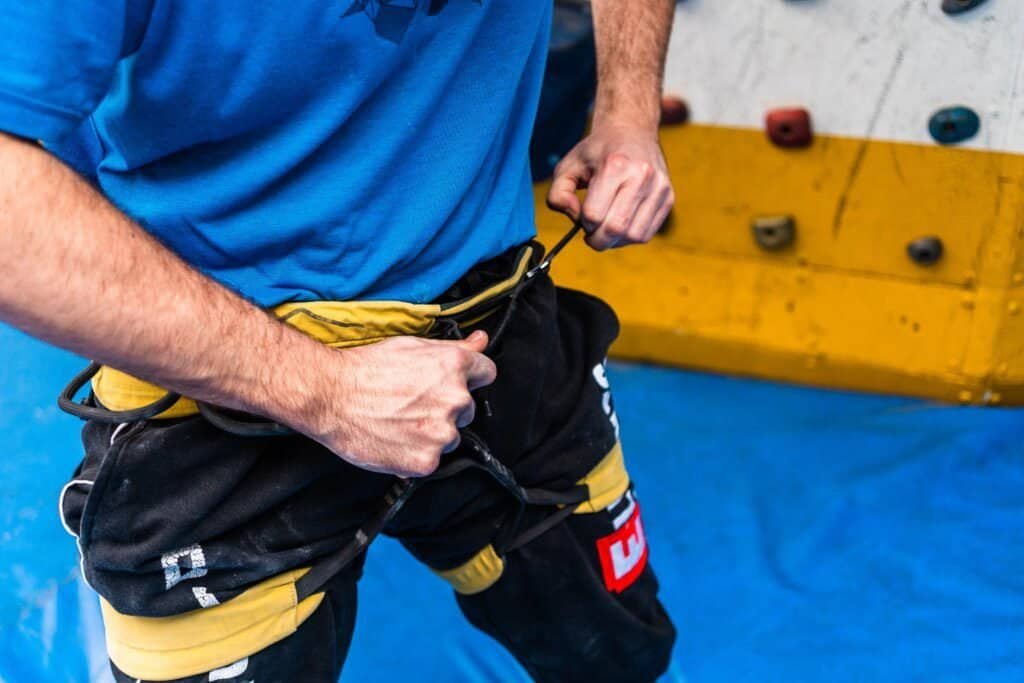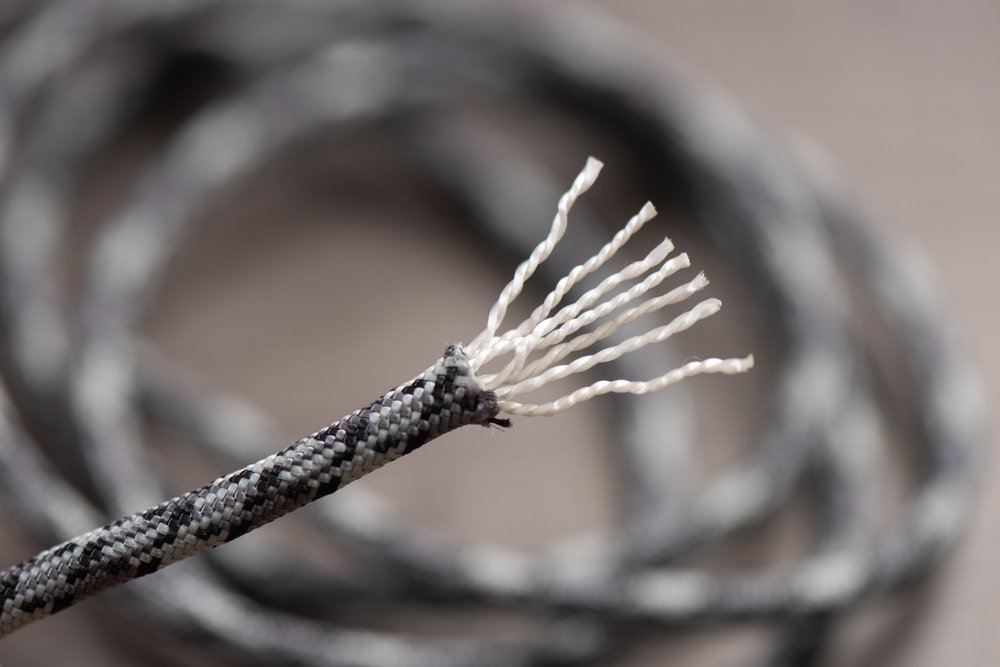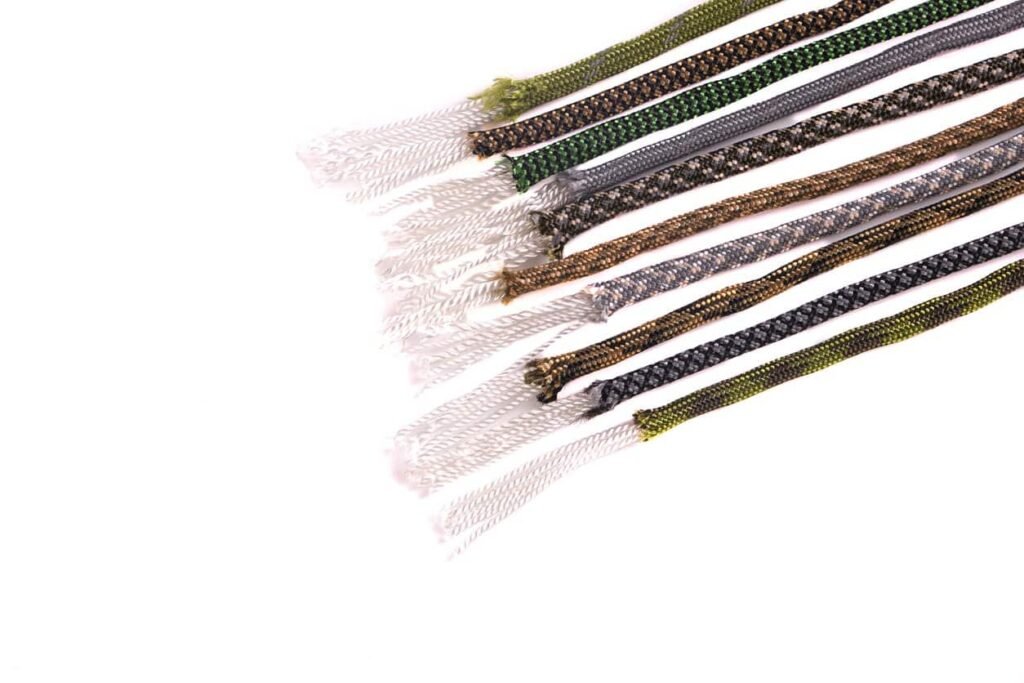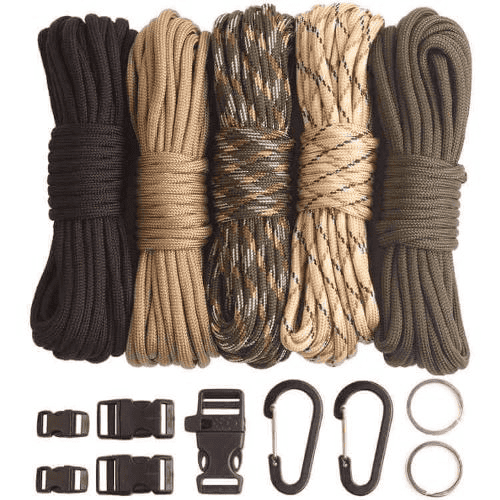 Paracord, an essential in the backpack of every outdoor enthusiast, boasts of strength, flexibility, and utility. Originally used in parachutes, it has found favor in numerous outdoor and survival scenarios. But have you ever wondered about its makeup? What exactly gives this cord its notable strength and reliability? Let’s delve into the very fabric of the paracord.
Paracord, an essential in the backpack of every outdoor enthusiast, boasts of strength, flexibility, and utility. Originally used in parachutes, it has found favor in numerous outdoor and survival scenarios. But have you ever wondered about its makeup? What exactly gives this cord its notable strength and reliability? Let’s delve into the very fabric of the paracord.
Paracord, short for parachute cord, is typically made from nylon or polyester, known for their durability and elasticity. The most common type, paracord 550, is made of a braided outer sheath with multiple inner yarns, giving it a unique combination of flexibility and strength.
To truly appreciate the versatility of paracord, understanding its composition and the nuances of its different types is essential.
The Genesis: Paracord’s Historical Background

Origins in Warfare
Paracord, originally known as “parachute cord,” traces its roots back to World War II. It was initially used as suspension lines for parachutes by airborne units and paratroopers. The reliability and strength of this cord quickly caught the attention of soldiers, who discovered its myriad of uses beyond just parachuting. From makeshift ladders to emergency sutures, paracord became an indispensable tool on the battlefield. For a visual representation of its initial use, watch this historical footage from the wartime archives.
Post-War Evolution
After the war, surplus paracord began to make its way into the hands of civilians. Outdoor enthusiasts, campers, and survivalists recognized its potential and began adopting it for various purposes. Its versatility, combined with its lightweight nature, made it a favorite for crafting, hiking, and even fishing. Over time, its popularity surged, leading to the development of various types and colors to cater to different needs and aesthetic preferences.
Modern-Day Significance
Today, paracord has transcended its military origins to become a global phenomenon. It’s not just a survival tool but also a symbol of resourcefulness and adaptability. From fashion accessories like bracelets and belts to essential gear in emergency kits, its applications are vast and varied. The continuous innovation around paracord, coupled with its rich history, makes it a timeless tool. For a deeper dive into its modern applications, check out this comprehensive video tutorial on innovative paracord uses.
Cultural Impact
The rise of paracord in popular culture is undeniable. It has not only become a tool but also a statement piece. Many wear paracord bracelets, not just as a survival tool, but as a fashion statement that embodies ruggedness, preparedness, and a nod to its historical significance. Various communities and groups have sprung up around the world, celebrating the art of paracord braiding and crafting. Workshops, online tutorials, and even paracord-themed events have become common, showcasing the blend of utility and artistry. This cultural embrace of paracord highlights its versatility and the deep connection many feel to its rich history.
Innovation and Future Prospects
As with many products that stand the test of time, paracord continues to evolve. Researchers and manufacturers are exploring ways to enhance its properties, from making it more eco-friendly to integrating tech features like LED lights or even conductive fibers for electronic applications. The future of paracord promises to be as dynamic as its past, with potential uses we can only begin to imagine. As technology and needs change, paracord’s adaptability ensures it will remain a staple in various fields, from outdoor adventures to innovative crafts and designs.
A Closer Look: Paracord Composition

Historical Context
Paracord, originally termed “parachute cord,” has its roots firmly planted in the military history of World War II. Designed as suspension lines for parachutes, its strength and durability quickly became legendary among soldiers. Beyond its primary use, soldiers found a multitude of applications for this versatile cord, from securing equipment to emergency medical uses. The composition of the paracord was crucial to its effectiveness, ensuring that it could withstand the rigors of war and the unpredictability of the battlefield.
Core Structure
At the heart of every strand of paracord is its core, often referred to as the “kern.” This core is typically made up of several smaller nylon strands twisted together, providing the bulk of the cord’s strength. The intertwined structure of these inner strands is what gives paracord its renowned resilience and tensile strength. This design ensures that even if the outer sheath is damaged, the inner core can still bear significant weight and strain.
Protective Sheath
Surrounding the core is the outer sheath, also made of nylon. This sheath is braided and serves multiple purposes. Firstly, it protects the inner core from external damage, abrasion, and the elements. Secondly, the braided pattern increases the cord’s overall flexibility and usability. The sheath’s design can vary, with different patterns offering varying levels of durability, flexibility, and aesthetic appeal. For those interested in the intricate braiding techniques of the sheath, this video tutorial offers a deep dive into the art of paracord weaving.
Material Evolution
While traditional paracord is made of nylon, there have been innovations in material choices over the years. Today, one can find paracord made from polyester, Kevlar, and even natural fibers. Each material offers its own set of advantages. For instance, polyester is more resistant to UV rays, while Kevlar adds fire resistance to the mix. The choice of material can influence the cord’s stretch, strength, and overall performance.
Significance in Modern Times
The composition of paracord is a testament to its adaptability and enduring relevance. From its military origins to its widespread use in crafts, outdoor activities, and even fashion, understanding its composition is key to appreciating its versatility. As we continue to find new uses and applications for this remarkable cord, its well-thought-out structure and design ensure it remains up to any challenge.
Varieties of Paracord

Historical Roots and Modern Evolution
The term “paracord” is derived from “parachute cord,” a nod to its origins in World War II as suspension lines for parachutes. However, as time progressed, the versatility of this cord became evident, leading to its adoption in various fields beyond the military. Today, paracord has evolved into a multifaceted tool with several varieties tailored to specific needs. From outdoor enthusiasts to crafters, the demand for different types of paracord has spurred innovations and variations in its composition and design.
Type I to Type IV
The most common classification of paracord is based on its strength and consists of types ranging from I to IV. Type I, with a minimum strength of 95 pounds, is lightweight and suitable for tasks like lanyard making. Type II can bear up to 400 pounds and is often used in general crafting. Type III, commonly known as Paracord 550 due to its 550-pound strength, is the most popular and versatile variant, ideal for outdoor activities and survival situations. Lastly, Type IV, with a strength of 750 pounds, is robust and used in applications requiring maximum durability.
Specialty Varieties
Beyond the standard classifications, the world of paracord offers specialty cords designed for unique applications. Reflective paracords, embedded with reflective tracers, are perfect for nighttime visibility. Fire-resistant variants cater to safety needs, while there are also elastic shock cords that stretch and absorb impact. Some paracords even come with integrated fishing lines or waterproof tinder, making them invaluable survival tools. These specialty cords highlight the adaptability of paracord and its ability to cater to niche requirements.
Choosing the Right Paracord
With such a vast array of options available, selecting the right paracord can seem daunting. However, understanding one’s needs is paramount. For crafting and fashion accessories, aesthetic appeal and flexibility might be prioritized. In contrast, outdoor adventures would demand strength and durability. The beauty of paracord lies in its versatility, and with the numerous varieties available, there’s a type of paracord perfectly suited for every task and every individual.
FAQ
Q1: How can I differentiate between genuine paracord 550 and imitations?
A: Genuine paracord 550 has 7-9 inner yarns and is quite strong, able to bear 550 lbs. Check the inner strands and test its strength.
Q2: What makes MIL-C-5040H different from regular paracord?
A: This military-grade paracord adheres to stringent quality and strength standards, often surpassing those of regular paracord.
Q3: Which is better for outdoor use – nylon or polyester paracord?
A: While both have their merits, nylon’s elasticity and strength give it a slight edge for most outdoor scenarios.
Q4: Is there a difference in the cutting technique for the different types of paracord?
A: Cutting techniques remain largely the same, but thicker cords like Paracord 750 might require sharper tools.
Q5: Can paracord be reused after it’s been subjected to heavy loads?
A: While paracord is durable, it’s advisable to inspect it for any signs of wear or damage before reusing. Continuous exposure to heavy loads can weaken its fibers.
Q6: How does water exposure affect paracord?
A: Nylon paracord can absorb water and might slightly stretch when wet, but it dries
Conclusion
Understanding the fabric of paracord allows one to harness its full potential, be it in survival scenarios or crafting endeavors. With its diverse types catering to various needs, it remains an irreplaceable asset in outdoor gear. For those keen to explore its myriad applications, check our detailed guide on paracord uses here.


